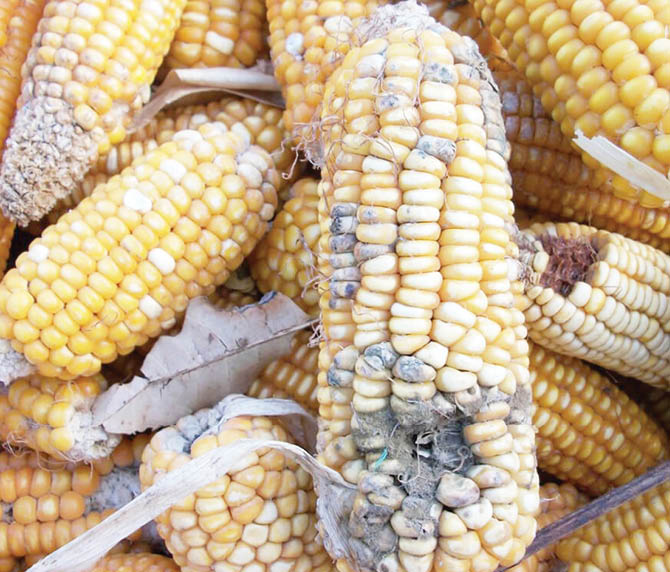AGRO SOLUTIONS
Many farmers have or are in the process of harvesting maize now, can you please share a guide on the best way to store the produce to avoid wastages. Deborah Musa, Sabo-Wuse, Niger State You are right, farmers have begun harvesting their maize and some are already done. And the most compelling issue after harvesting […]

Poorly stored maize
Many farmers have or are in the process of harvesting maize now, can you please share a guide on the best way to store the produce to avoid wastages.
Deborah Musa, Sabo-Wuse, Niger State
You are right, farmers have begun harvesting their maize and some are already done. And the most compelling issue after harvesting is storage as farmers can lose their crop due to poor storage.
Storage has been the major problem of Nigerian agriculture for a long time and that has resulted in considerable waste of agricultural output.
Due to inadequate storage facilities, a lot of farm produce have been condemned to wastage and our economy has suffered dearly for it.
Maize, being one of the most important cereals used majorly in homes is susceptible to pest infestation by weevils, reducing their nutritional value, weight and most importantly, the market price.
Hence, there is need for improved storage to protect maize and its products from damage or wastage whilst ensuring household food supply.
Prior to storage, immediately after harvesting, maize should be dried in the field as much as possible to ensure that it reaches safe moisture level and can then be stored properly.
Once the products have reached the safe moisture content, they can be stored permanently.
There are various ways to store maize depending on the duration of storage and relative humidity of the outside air during the period of storage.
According to Adama J. Adama medium, the first step when storing maize for a long period is to prepare your storage facilities/bins.
If you decide to store the maize in bins or sacks, ensure that these storage facilities are well kept, dried, and free of insects’ infestation.
The next step is to choose quality grains.
Don’t store grains that are already exposed to moisture or compromised by insects. They will only end up deteriorating further.
To get the best from your long-term maize storage, ensure that the grains that you are storing are in great condition, free of moisture, and insects.
After doing this, proceed to tune the temperature of your storage facilities to the right atmosphere.
This means that the facilities should not be too dried or too moist. You can use the Grain moisture tester to test the grain facilities and keep the grain facility in a friendly environment.
It is advisable to keep the storage room containing your maize grain between 40 to 50 degrees.
Farmers should bear in mind that storage requirements have changed from the days when the farmer only had to worry about storing his or her own food requirements and some seed for the following season.
The new types of maize cannot be stored in ways that traditional maize was stored.
Maize that is being produced now is mainly hybrid maize which because of its shorter and looser husks should be ideally stored shelled in a closed store with the use of pesticides.
Most importantly is that drying at home should be done on a plastic sheet on the ground or in drying tunnel. A good storage should protect the maize from ground and rain water, insects and other pests, and excessive heat.
Ganiyat Amodu, an agriculturist, sent in this response from Shaki, Oyo State
